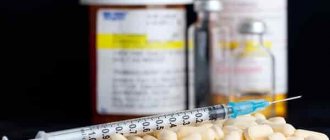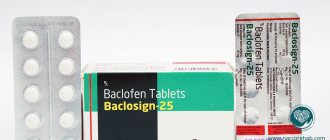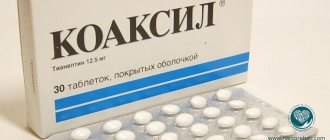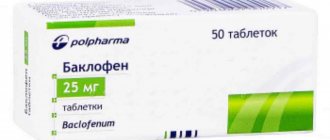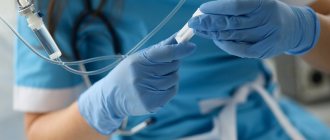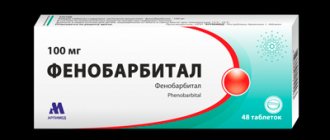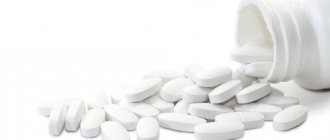Atropine (anatropine) - what is it? Atropine is an m-anticholinergic blocker (pharmacological group), a dangerous plant alkaloid and tropine ester. The medicine atropine looks like a white powder without a distinct odor, quickly dissolves in liquids, including alcohol and water. This substance is a poison for the human body; it is naturally found in nightshades: belladonna (belladonna), datura, henbane . Atropine sulfate formula: C17H23NO3.
Atropine - indications for use
The drug is available both as a solution for intravenous administration (atropine sulfate) and in tablet form; in addition, there are also eye drops.
What is atropine used for medical purposes? Previously, it was used to treat psychosis using atropine coma; today this technique is not used in medicine. Medicines containing atropine (anticholinergics) are used for the treatment of asthma, gastrointestinal tract in gastroenterology, as well as in ophthalmology, psychiatry, pulmonology, cardiology, premedication in surgery, urology, toxicology, poisoning with organophosphorus compounds, etc. However, the drug has quite a lot of contraindications and side effects, it should not be used by those who are allergic to atropine (Atropinum Sulfuricum D5), as well as by glaucoma, liver disease, heart disease (arrhythmia, tachycardia), increased intraocular pressure, etc.
Today, a medicine called atropine and atropine-containing drugs are quite often used by drug addicts for recreational purposes not related to medical indications, to obtain a “high” and a euphoric effect. In the article you will learn everything about atropine, its action and the consequences of non-medical use.
Contraindications
There are known contraindications for which this drug is not prescribed. Namely when:
- hypersensitivity to its components.
In ophthalmology, the use of eye drops is not recommended for:
- angle-closure glaucoma;
- open-angle glaucoma;
- keratoconus;
- children under 7 years of age.
There is a significant list of restrictions on the use of Atropine. For example, its use is not recommended for various diseases of the cardiovascular system, high body temperature , reflux esophagitis, hernia of internal organs, diseases and disorders of the gastrointestinal tract, increased intraocular pressure, nonspecific ulcerative colitis , and so on.
How does atropine affect the human body?
The side effects of atropine are quite extensive, ranging from dizziness to hallucinations. Among the consequences of consuming atropine, one can identify worsening diseases of the cardiovascular system, inflammatory processes on the mucous membrane of the eyeballs (eye drops), rapid heartbeat, and lack of oxygen to the brain. If the drug is beneficial in therapeutic doses, then if used inappropriately it can lead not only to severe intoxication of the body, but also to death.
The effect of atropine on the body:
- stimulation of the central nervous system;
- hallucinations;
- psychosis;
- psychomotor agitation;
- pupil dilation;
- blockage of secretory glands;
- stomach contractions decrease;
- heartbeats increase.
After taking atropine orally, the effects occur within 30 minutes, and when administered intravenously, within a few seconds.
Pharmacodynamics and pharmacokinetics
Atropine is an alkaloid that is also found in some plants, such as belladonna, datura, henbane and others. In medicine, a substance called atropine sulfate . It should be noted that the release form of this component is a granular or crystalline white powder that is odorless. It is easily soluble in water or ethanol and is resistant to chloroform and ether.
The pharmacological group that this drug belongs to is anticholinergic. In this case, the mechanism of action includes blocking m-cholinergic receptors.
The use of this substance leads to amidriasis, paralysis of accommodation, increased intraocular pressure, tachycardia and xerostomia. Inhibition of the secretion of bronchial, sweat and other glands was also noted. Relaxation occurs in the smooth muscles of the bronchi, biliary or urinary organs, and gastrointestinal tract, that is, the substance acts as an antagonist and exhibits an antispasmodic effect.
In large dosages, stimulation of the nervous system is possible. When Atropine is administered intravenously, the maximum effect is observed after 2-4 minutes, and if eye drops are used, then after 30 minutes.
Penetrating into the blood , the substance interacts with plasma proteins by 18%, possibly passing through the BBB. Excretion is carried out by the kidneys, unchanged by 50%.
Narcotic effect of atropine
The body's response varies greatly depending on the dose consumed. When using a small dose of the substance, a surge of strength and energy occurs, and mood improves. Taking an average dose leads to stress relief and relaxation; an overdose of the drug is fraught not only with poisoning and hallucinations, but also with death. The narcotic effect of atropine is explained by the accumulation of acetylcholine in the synoptic cleft, inhibition of parasympathetic effects and the functioning of the nervous system.
If the permissible daily dosage is exceeded, a person feels warm and relaxed, relaxed, euphoric and slightly dizzy. The narcotic effect of atropine can be compared to the use of marijuana and other cannabinoids containing THC. How a drug affects a person depends on his mood and state of mind before use. If the mood is negative, the substance will only intensify the reaction, which can lead to panic attacks and depression.
Euphoria after a few hours is replaced by the opposite effect: drowsiness, lethargy, weakness, emptiness, weakness. A person has problems with the gastrointestinal tract and a headache. The higher the dose of atropine, the stronger the symptoms of intoxication, the person begins to behave inappropriately, and psychosis occurs due to the effect of the drug on the central nervous system. They are accompanied by mydriasis, insomnia, tachycardia, pressure surges, and behavioral and mental abnormalities. This condition can last about 24 hours.
Reviews of Atropine
It should be noted that this drug is actively used in a variety of situations and not always according to indications. However, reviews of Atropine show that it is one of the most effective drugs and is what specialists prefer to prescribe in clinical practice, writing a prescription in Latin.
There are also often reviews of eye drops when this drug is prescribed to patients, but they do not even understand what it is and why it should be taken.
On various medical forums you can find many user reports when undesirable effects developed while using this drug. Moreover, the patients experienced the symptoms of poisoning in full, with all the severity of their manifestation.
Thus, if patients are prescribed this drug, then it must be taken with extreme caution, since the result of illiterate treatment can be the most unexpected and even severe.
In general, Atropine is a fairly strong specific drug. Its proper use will certainly be beneficial for human health, but only if it is prescribed correctly by a qualified specialist.
The emergence of addiction and its treatment
In pursuit of new unusual sensations and euphoria, as well as an attempt to get away from problems, people turn their attention to pharmaceutical drugs. This is exactly the effect that atropine gives: fogginess of consciousness, withdrawal from reality, artificial elevation of mood. Not all people know about the dangers of atropine and the consequences of its regular and excessive use. Even a person who has been prescribed a drug by doctors can become addicted to the drug. Having felt the effect of the drug, a person may become psychologically dependent on its effect.
If a drug helps an addict cope with depression, stress, internal problems and complexes, he will use it again and again, which will lead to addiction. However, no chemical substance can be used for a long time without consequences for the body. The longer the period of use, the more the addict degrades both physically and mentally. As a result of acquiring drug addiction, people only have more problems, they grow like a snowball and do not allow a person to get out of the vicious circle. Only doctors at the Favorit drug treatment clinic in Rostov-on-Don can save a person from imminent death.
The development of addiction is also influenced by the fact that a person stops receiving pleasure in the usual way: from delicious food, walks with friends, a favorite activity, communication with loved ones. The only source of pleasure, euphoria and pleasure is atropine. Soon the addict begins to realize that the usual dose no longer gives the desired effect, so he gradually increases the dosage and also begins to use other pharmaceutical drugs or psychotropic substances. step by step a person loses himself as an individual and becomes one step closer to death.
Phases of poisoning
Regardless of whether a person took a large dose of the drug accidentally or intentionally, he will invariably experience severe intoxication. Atropine poisoning leads to the appearance of corresponding symptoms within 10-20 minutes after consumption. A person begins to feel dry mouth and eyes, his temperature rises, and skin hyperemia occurs. There are several phases of poisoning.
Psychomotor agitation
Atropine intoxication leads to various kinds of disorders of the central nervous system, including due to dry eyes, a person’s vision decreases and deteriorates, dizziness, muscle hypertonicity, tendon reflexes, confusion, increased sensitivity to light, mydriasis, convulsions, psychosis occur. . A person addicted to a psychoactive substance begins to behave inappropriately: laugh, cry, perform strange actions, run. He may experience visual, tactile or auditory hallucinations, and mental disorders with predominant psychomotor agitation occur.
CNS depression
Disruption of the nervous system begins in a person within 7-10 hours from the moment of consuming atropine in an increased dosage. The victim feels weakness or twitching in the muscles, his thoughts are confused, he cannot formulate a sentence. The danger of the drug is that its excessive use can lead to coma.
When taking a large dose of the drug, the symptoms of depression of the nervous system are very obvious, and there may not even be psychomotor agitation. Feeling the desire to sleep, a person falls asleep, but the drug causes disruption of the heart, blood vessels and respiratory system, which can cause death in sleep. Asphyxia, respiratory arrest, heart failure, and pulmonary or cerebral edema may occur due to breathing problems.
Overdose
In cases of overdose, severe dry mouth may occur, with a burning sensation, difficulty swallowing, severe photophobia, redness and dryness of the skin, high body temperature, rash, nausea, vomiting, tachycardia and arterial hypertension.
The effect on the nervous system may include restlessness, tremors , confusion, agitation, hallucinations and delusions, as well as drowsiness and stupor. Such conditions can result in death caused by cardiovascular or respiratory failure.
Particularly severe cases require elimination by administering Physostigmine and prescribing Diazepam in precise dosages.
Airway control is necessary, and if respiratory failure develops, inhalation with oxygen and carbon dioxide is performed.
The appearance of fever requires the use of cold compresses or wiping with water, ensuring adequate fluid intake. If necessary, catheterization of the urethra is performed, and if the patient is photophobic, the room is well darkened.
Treatment of intoxication
How to cope with poisoning? How is acute atropine intoxication treated? First of all, you need to call the Favorit RC and call the emergency drug treatment service to your home. Doctors will arrive within 30-40 years. However, quite often victims require pre-medical assistance; you can get detailed advice from professionals by calling our clinic’s hotline absolutely free. The patient will also need emergency medical care and then hospital treatment.
How to remove poison from the body without harming the health of the addicted person? First of all, doctors carry out a detoxification procedure. To cleanse the body of toxins as quickly as possible, droppers with adsorbents and a number of medications are used to speed up metabolism and normalize the patient’s general condition. In addition, depending on the degree of intoxication, the following measures are used: gastric lavage (potassium permanganate), induction of vomiting, use of laxatives and diuretics, hemosorption.
Next comes the turn of symptomatic treatment and elimination of physiological disorders in the addict’s health. The drugs are used according to indications and contraindications. In case of severe clinical picture and breathing problems, tracheal intubation and artificial ventilation are used, resuscitation measures include installation of a catheter and administration of the necessary medications intravenously.
In case of atropine poisoning, the victim must be given an antidote: Physiostigmine, Aminostigmine, Nivalin or Galantamine in an individual dosage. These drugs help to quickly get rid of the unpleasant consequences of intoxication and symptoms such as hallucinations.
Atropine price, where to buy
You can buy Atropine in solution for a price starting from 8 rubles.
The price of Atropine drops is approximately 40 rubles. You can buy eye drops at any pharmacy.
- Online pharmacies in RussiaRussia
- Online pharmacies in UkraineUkraine
- Online pharmacies in KazakhstanKazakhstan
ZdravCity
- Atropine eye drops 1% 5ml FSUE Moscow Endocrine Plant
57 RUR order - Atropine solution d/in. 1 mg/ml 1 ml n5 Federal State Unitary Enterprise Moscow Endocrine Plant
58 RUR order
Pharmacy Dialogue
- Atropine sulfate (amp. 0.1% 1 ml No. 10) DHF JSC
48 RUR order
show more
Pharmacy24
- Atropine-Darnitsa 0.1% 1 ml No. 10 solution PrAT" Pharmaceutical company "Darnitsa", Ukraine
31 UAH. order
PaniPharmacy
- Atropine liquid Atropine sulfate h/c 1% 5ml Ukraine, OZ GNTsLS LLC
39 UAH order
- Atropine ampoule Atropine sulfate solution d/in. 0.1% amp. 1ml No. 10 Ukraine, Darnitsa ChAO
31 UAH order
- Atropine ampoule Atropine sulfate solution d/in. 0.1% amp. 1ml No. 10 Ukraine, OZ GNTsLS LLC
20 UAH order
show more
Use by drug addicts
Recreational use of atropine has recently begun to increase.
Today it is quite easy to find a prescription or an illegal drug on the Internet and social networks. Pharmacy drugs are among the cheapest and most accessible, despite the ban and criminal prosecution for distribution without a doctor's prescription. Most often, people who are addicted to atropine are those who have already used or are using narcotic substances. Drug addicts can combine the drug with alcohol, other pharmaceutical drugs, tranquilizers, psychostimulants, opiates, etc. The use of several chemical substances in order to obtain a euphoric effect is called polydrug addiction.
Dual addiction is quite difficult to cure. It is worth noting that it is impossible to get rid of this kind of drug addiction on your own at home. It is necessary to contact a specialized drug treatment clinic. Our rehabilitation center in Rostov-on-Don provides assistance to all drug addicts and their loved ones, regardless of their length of use.
Systematic, regular use of atropine in high dosages leads to serious health consequences for addicts. This is not only a disruption of the central nervous system and depression of cognitive functions, and, accordingly, a person’s intellectual abilities, but also the development of heart and vascular diseases, and disruption of the respiratory system. The addict has problems with communication and socialization. Physical and mental dependence lead to the emergence and development of severe withdrawal symptoms.
Interaction
This drug can weaken the effect of m-cholinomimetics and anticholinesterase drugs. At the same time, drugs with anticholinergic activity, as well as Diphenhydramine and Promethazine, .
Combination with antacids that contain Al3+ or Ca2+ may reduce the absorption of the main substance from the gastrointestinal tract. Some tricyclic antidepressants, Amantadine , phenothiazines , Quinidine , antihistamines and other drugs with m-anticholinergic properties can enhance the development of systemic undesirable effects.
Nitrates can cause an increase in intraocular pressure, and Atropine can change the absorption parameters of Levodopa and Mexiletine .
Mechanism of action of atropine
The drug blocks M-receptors and nerve impulses. Atropine binds to areas of the brain instead of acetylcholine, as a result of which various abnormalities occur in the human body, including inhibition of impulses from the central nervous system and suppression of the secretion of sweat, salivary and a number of other glands. As a result, the smooth muscles of the intestines, gastrointestinal tract and bladder relax and expand. Atropine causes paralysis of accommodation and mydriasis, farsightedness, increased heart rate, bradycardia, and vasodilation.
Side effects
When treated with Atropine, side effects may develop that affect the activity of the nervous, cardiovascular, digestive system and sensory organs.
Therefore, undesirable effects may occur in the form of: headache, dizziness, insomnia, confusion, euphoria, hallucinations, mydriasis, accommodation paralysis , disturbances in tactile perception, sinus tachycardia, worsening myocardial ischemia, xerostomia and constipation . Fever, atony of the bladder and gastrointestinal tract, urinary retention, and various may also develop .
Local effects include: tingling and increased intraocular pressure, irritation, hyperemia or hyperemia of the eyelids, swelling of the conjunctiva, and so on.
Overdose and poisoning
Atropine, depending on the form of release, can be used orally, intravenously, in the form of eye drops, intramuscularly and subcutaneously. The therapeutic dose of the drug when taken orally is 0.25-1 mg (no more than 3 times a day). The dosage depends on the individual characteristics of the human body. For intravenous and intramuscular administration, the dose is identical. If your doctor has prescribed you drops to dilate the pupil, you should not take them in excess of the prescribed dose, a maximum of 2 drops 2 times a day. Even if a person does not intend to obtain a narcotic effect, if the dose is exceeded, an overdose can occur. In addition, atropine is found in the fruits of plants from the nightshade family, which can also easily be poisoned.
Symptoms of atropine overdose
- dilated pupils;
- lack of reaction to light;
- nausea, vomiting;
- tremor of the limbs;
- thirst, dry mouth;
- difficulty urinating;
- headache;
- dizziness;
- rapid pulse;
- accelerated heartbeat;
- high blood pressure;
- cramps, spasms;
- constipation.
Atropine overdose can occur not only when the dose is increased, but also when combined with other chemicals and toxins, including alcohol. As soon as you notice the first signs of intoxication and poisoning, you should call the Favorit RC in Rostov-on-Don. Doctors at our center have the opportunity to come to the patient’s home and carry out all the necessary resuscitation measures, as well as pre-consult relatives about emergency care.
Within 30-40 minutes, the toxic effect of atropine occurs, which can last for several days. Toxins spread throughout the body, poisoning it and accumulating in the tissues of internal organs. A pharmaceutical drug can linger in the body of an addicted person for quite a long time. This is why a person becomes lethargic, weakened, painful, irritable, and loses interest in others. The drug removes all useful substances and vitamins from the body, reducing the addict’s immunity. A person begins to have problems with teeth, hair, nails, and skin.
There are 3 degrees of atropine poisoning: mild, moderate and severe. If at the first stage a person can still cope with the symptoms on his own at home, then in the case of moderate poisoning it is worth calling an ambulance at home. If you do not contact the clinic in time, atropine will begin its harmful effects and destructive effects on the human heart, liver, kidneys, blood vessels and central nervous system. Frequent symptoms of atropine intoxication: hallucinations, psychosis, loss of coordination, abnormalities of the nervous system.
If an addict regularly uses atropine to obtain a euphoric effect, the consequences of taking it can be much sadder and more dangerous: paralysis of the respiratory muscles, coma, death. While in a coma, a person is at risk of impaired cognitive functions and intellectual abilities, and mental abnormalities. It is not difficult to calculate the lethal dose of atropine; it is 1.5 mg per 1 kg of body weight of an adult. Death from abuse and overdose occurs within 5 hours after use.
First aid
When the first symptoms of atropine poisoning appear, call an ambulance and provide the victim with pre-medical measures to prevent severe intoxication. The sooner they are provided, the more favorable the prognosis. Let's consider the algorithm of pre-medical measures:
- Gastric lavage - a person is offered several glasses of water, after which vomiting is stimulated by irritating the root of the tongue. It is important to induce vomiting in the next 30 minutes after poisoning; later, most of the drug has time to be absorbed, which is dangerous due to conditions in which vomiting can be life-threatening (coma, hyporeflexia, etc.).
- After vomiting, the victim is offered any adsorbents - Activated carbon, Enterosgel, etc.
- If a person’s blood pressure has sharply decreased, he complains of weakness and dizziness; before the doctors arrive, he is offered strong tea or coffee with sugar. Caffeine contained in drinks stimulates vascular tone, preventing a critical drop in pressure and collapse.
In case of loss of consciousness, no first aid is provided. The victim is placed on his side, raising his head 45 degrees to prevent aspiration of the respiratory tract with vomit.
In case of respiratory and cardiac arrest, resuscitation measures are carried out - indirect cardiac massage and mouth-to-mouth artificial respiration.
Treatment of atropine addiction in Rostov-on-Don
Treatment of atropine addiction, as well as addiction to any pharmaceutical drugs, takes place in a drug rehabilitation center in Rostov-on-Don. Therapy includes detoxification and symptomatic treatment, as well as rehabilitation, which stabilizes the addict’s condition and consolidates the treatment results. Doctors help patients eliminate psychological cravings for psychoactive substances through group and individual sessions. During the treatment process, various psychotherapeutic and medicinal techniques are used, as well as psychocorrection and family therapy, especially necessary for adolescents. The last step in the treatment of drug addiction is resocialization and adaptation to society.
